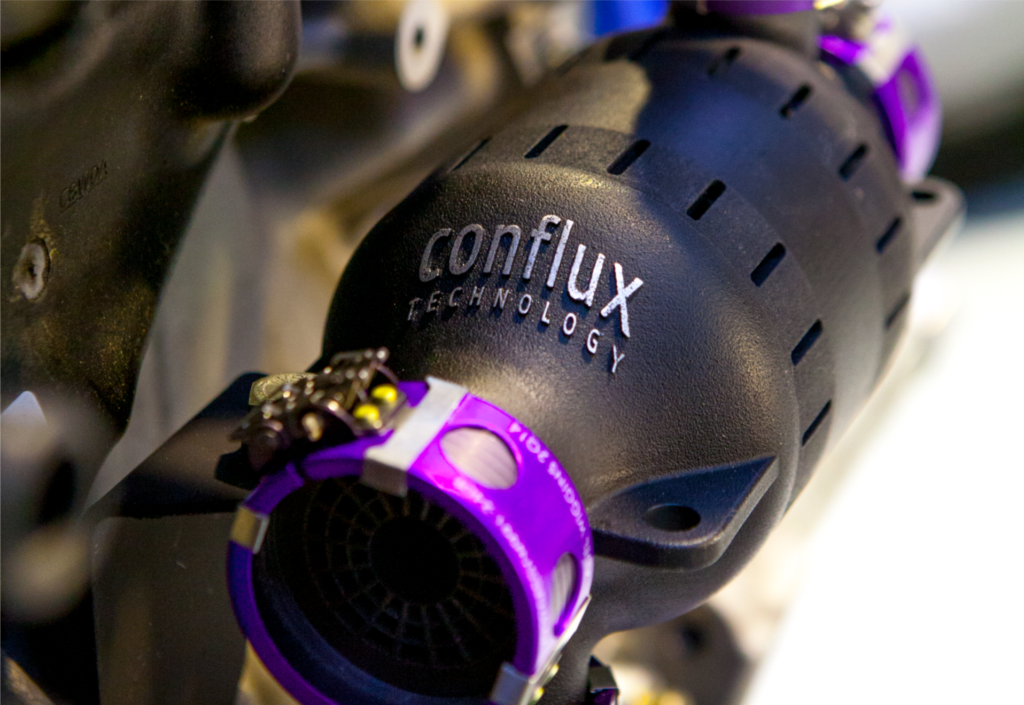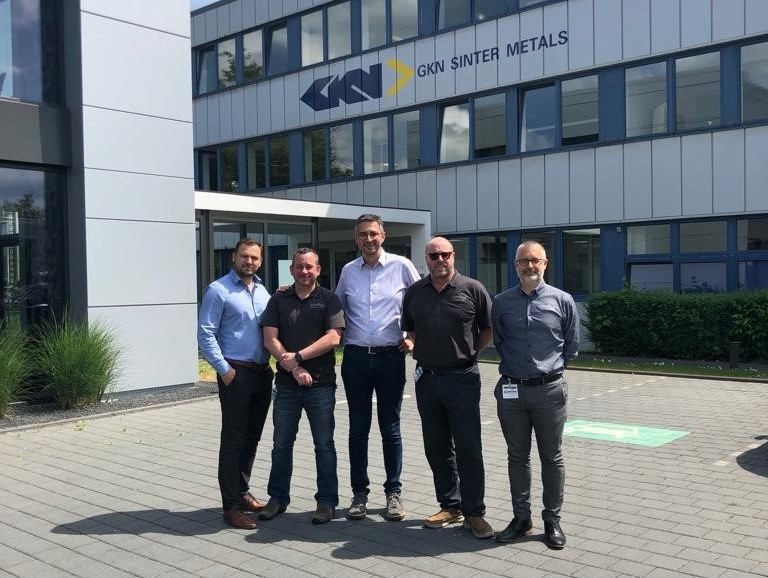GKN Additive, a 3D printing service provider, has partnered with heat transfer specialist Conflux Technology to design and produce 3D printed heat exchangers for customers in Europe.
Conflux has built its entire business around 3D printed heat exchangers, which feature optimized geometries to maximize cooling efficiency for high-temperature parts. With the latest partnership, Conflux will combine its expertise in heat exchanger design with GKN’s high-volume 3D printing capabilities to serve clients in automotive, aerospace, electronics, and beyond.
John Dulchinos, President of GKN Additive, said, “We are delighted to be partnering with Conflux Technology. Heat exchangers and thermal management are key areas where 3D printing can deliver high value solutions. Combining forces with industry application experts such as Conflux enables us to provide best-in-class solutions to our customers.”

Conflux’s heat exchanger stronghold
Conflux Technology was founded in 2017 by Michael Fuller, an engineer with a background in Formula 1, the World Rally Championship, and Le Mans. Fuller took what he learned about heat exchangers from the world of motorsports and transferred it over to the additive manufacturing sphere. His firm is now looking to disrupt the $16.6 billion heat exchanger market with devices 3D printed via laser powder bed fusion technology.
The company’s 3D printing capability is backed by computational heat transfer simulations, which enable the production of optimized high-performance heat exchangers for all manner of critical industries. According to Conflux, its printed parts offer unique designs that can provide performance, cost, and lead time benefits when compared to traditionally manufactured counterparts.
Conflux also prides itself on its extensive portfolio of engineering services, including product design, CFD analysis, in-house 3D printing, post-processing, and even independent validation.
In October 2021, the firm closed an $8.5 million (AUD) Series A financing round with AM Ventures and adopted Australia’s ‘Synchrotron’ particle accelerator to identify hidden anomalies within its 3D printed parts.
More recently in February this year, Conflux also teamed up with Deakin University’s School of Engineering and Institute for Frontier Materials (IFM) to develop new aluminum alloys for its 3D printed heat exchangers. The nine-month research project is backed by $138,000 in funding from the Innovative Manufacturing Cooperative Research Centre (IMCRC).

Leveraging 3D printing’s design freedom
At their core, Conflux’s heat exchangers leverage the design freedom granted by additive manufacturing. After all, according to Fuller, a heat exchanger’s performance is “heavily dependent on geometry”.
The firm utilizes its own specialist DfAM methodology to enable the bulk of the design work, initially developing multiple design concepts to choose from. Conflux also performs CFD simulations and FEA (Finite Element Analysis) on its designs to predict the performance of each of its geometries. Here, characteristics such as heat flux and fluid flow are optimized by improving the heat rejection and pressure drop of the designs.
As a result, Conflux can deliver unique monolithic heat exchangers with geometric features that simply aren’t possible using subtractive manufacturing methods. Naturally, the 3D printing-centric approach also comes with its own set of challenges. For example, it’s difficult to determine the probability of thin wall failures when dealing with monolithic parts containing complex internal cooling channels.
With GKN Additive now on board, Conflux is more ready than ever to expand its customer base and scale up production across Europe.
Fuller said, “We’re excited to be able to offer our customers access to GKN Additive’s manufacturing services. Its capability to manufacture large volume orders in Europe is a perfect fit for our EU customers looking for serial production near point of use. Being able to provide our technology to their vast array of top tier and technologically advanced customers is already proving fruitful.”

Subscribe to the 3D Printing Industry newsletter for the latest news in additive manufacturing. You can also stay connected by following us on Twitter, liking us on Facebook, and tuning into the 3D Printing Industry YouTube Channel.
Looking for a career in additive manufacturing? Visit 3D Printing Jobs for a selection of roles in the industry.
Featured image shows the Conflux Core Heat Exchanger design. Photo via Conflux.



